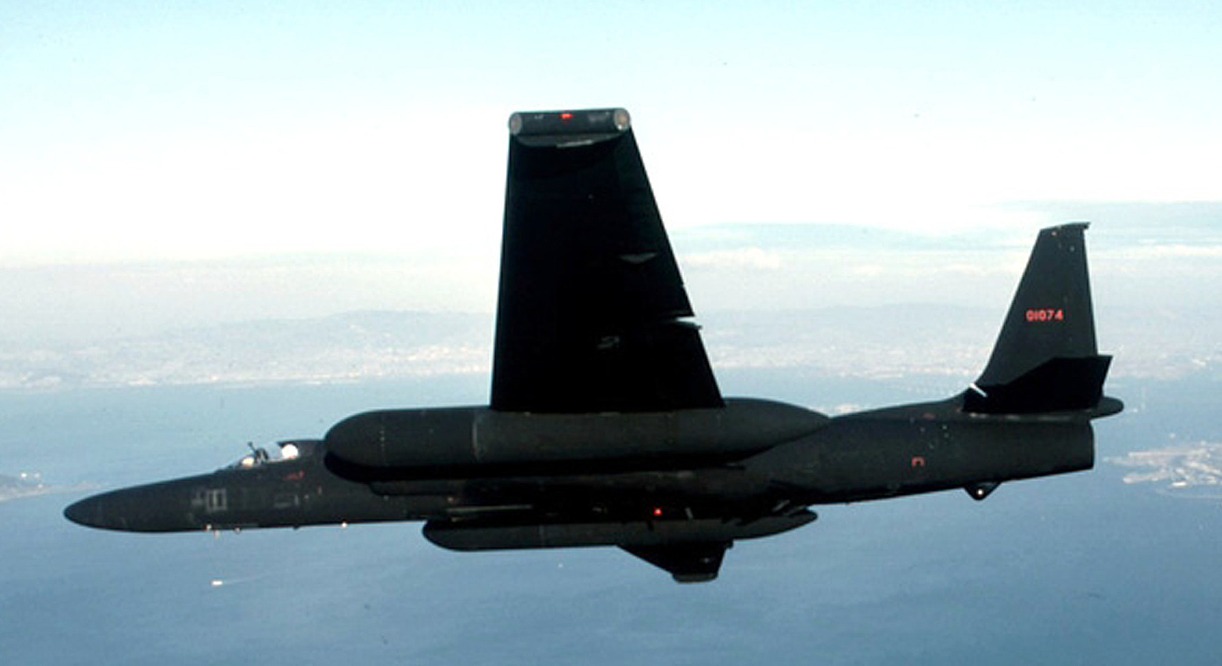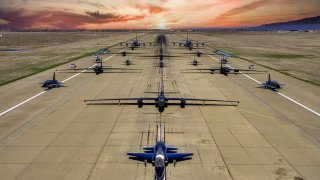U-2 Spy Planes' Spectacular 'Elephant Walk' at Beale AFB: A Glimpse into Aviation History and the End of an Era
On January 4, 2024, the U-2 "Dragon Lady" aircraft were seen lined up with T-38 Talons from the 1st Reconnaissance Squadron, and KC-135R Stratotanker aircraft from the 940th Air Refueling Wing.
Summary: Some fortunate U.S. military personnel experienced the awe-inspiring sight of eight U-2 spy planes in a rare 'Elephant Walk' at Beale Air Force Base, California. This showcase of joint airpower, featuring U-2 'Dragon Lady' aircraft, T-38 Talons, and KC-135R Stratotankers, highlights the prowess of the United States Air Force.
Eight U-2 Spy Planes Seen in 'Elephant Walk'
Aviation buffs may be lucky to see a single U-2 spy plane – apart from the few that are in a museum – but earlier this month, eight of the legendary aircraft were lined up in an "Elephant Walk" at Beale Air Force Base (AFB), California as part of the United States Air Force's efforts to showcase the joint airpower of the multiple wings stationed at the facility.
On January 4, the U-2 "Dragon Lady" aircraft were seen lined up with T-38 Talons from the 1st Reconnaissance Squadron, and KC-135R Stratotanker aircraft from the 940th Air Refueling Wing.
Currently, a total of 27 U-2s are housed at Beale AFB, and those aircraft rotate through military installations around the world.
History of Elephant Walks
In recent years, the United States Air Force has conducted multiple very high-profile "elephant walks," the term for taxiing numerous aircraft before takeoff. In addition to the close formation on the ground, it can involve a minimum interval takeoff.
The first elephant walks occurred during the Second World War when large fleets of allied bombers massed for attacks – and observers on the ground noted that as the aircraft lined up, it resembled the nose-to-tail formations of elephants walking to a watering hole.
Today, the U.S. Air Force employs elephant walks to show the capability of a unit as well as the teamwork that is required to conduct such an operation. It also can help pilots prepare for the launching of fully armed aircraft in a mass event if needed.
The U-2 in the Spotlight
The U-2 was designed to provide high-altitude, all-weather surveillance and reconnaissance, day or night, in direct support of U.S. and allied forces.
Developed at Lockheed's famed Skunk Works division under the supervision of engineering guru Clarence "Kelly" Johnson in 1953, the U-2 took the sleek lines of a traditional sailplane featuring long, tapered wings that allowed it to fly missions ranging 3,000 miles while carrying 700 pounds of then state-of-the-art photoreconnaissance equipment.

It wasn't an easy plane to fly and by some accounts was actually the most difficult to master. Known by its nickname "Dragon Lady," it could reach altitudes of 70,000 feet – higher than what was believed to be a threat from enemy missiles. Pilots had to wear a full-pressure suit similar to those worn by astronauts.
The aircraft has been synonymous with the Cold War, in part because, on May 1, 1960, a Soviet surface-to-air missile struck a U-2 piloted by Francis Gary Powers while on a reconnaissance mission over Russia. Yet, despite that incident, the U-2 has remained a critical asset for the IC.
The program was restarted in the 1980s and as a result, many of the U-2s flying today aren't that old – and while the basic design is essentially the same as the originals produced some twenty years earlier, they are 40 percent bigger and feature a modular design that allows the aircraft to carry more equipment, but also heavier equipment. That approach also has meant that the U-2 could be adapted to suit specific missions.
Those U-2s currently in operation can carry three times as much reconnaissance equipment and fly nearly twice as far for three times as long as those first U-2s built during the dark days of the Cold War. In recent conflicts in Afghanistan and Iraq, the Dragon Lady has been used as aerial "eavesdropping devices" where it could survey dirt patterns to look for signs of makeshift mines and improvised explosive devices (IEDs).
The aircraft has also shown versatility as a non-military aircraft, and as noted by Lockheed Martin it has "morphed into everything from a high-tech NASA platform for conducting physics experiments to a high-altitude tool for tracking the migration of destructive spruce bark beetles through the forests of Alaska."
End of the Line for the U-2
It was announced earlier this year that the Air Force will likely move forward with its plans to retire the U-2 Dragon Lady by Fiscal Year 2026 (FY26). It would mark the end for the spy plane, which first flew in the skies over Groom Lake in 1955.
This isn't exactly "news," as Air Force leaders have been considering retiring the U-2 fleet for nearly two decades. The RQ-4 Global Hawk unmanned aerial systems (UAS) were originally slated to replace the Dragon Lady but now the Hawk's wings have been clipped as well.
As a result, if lawmakers agree, the Air Force could retire its remaining RQ-4s just after the Dragon Lady is sent to retirement. The service would turn to space-based sensors to collect high-altitude images instead.
However, as reported by TheDrive, NASA could likely still fly the U-2 in its ER-2 configuration in very small numbers.
Author Experience and Expertise
Peter Suciu is a Michigan-based writer. He has contributed to more than four dozen magazines, newspapers, and websites with over 3,200 published pieces over a twenty-year career in journalism. He regularly writes about military hardware, firearms history, cybersecurity, politics, and international affairs. Peter is also a Contributing Writer for Forbes and Clearance Jobs. You can follow him on Twitter: @PeterSuciu. You Can Email the Author: [email protected].
All images are Creative Commons.


